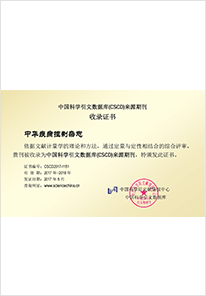2020 Vol. 24, No. 11
Display Method:
2020, 24(11): 1241-1245,1347.
doi: 10.16462/j.cnki.zhjbkz.2020.11.001
Abstract:
2020, 24(11): 1246-1251.
doi: 10.16462/j.cnki.zhjbkz.2020.11.002
Abstract:
2020, 24(11): 1252-1256.
doi: 10.16462/j.cnki.zhjbkz.2020.11.003
Abstract:
2020, 24(11): 1257-1262.
doi: 10.16462/j.cnki.zhjbkz.2020.11.004
Abstract:
2020, 24(11): 1263-1268, 1281.
doi: 10.16462/j.cnki.zhjbkz.2020.11.005
Abstract:
2020, 24(11): 1269-1274, 1331.
doi: 10.16462/j.cnki.zhjbkz.2020.11.006
Abstract:
2020, 24(11): 1275-1281.
doi: 10.16462/j.cnki.zhjbkz.2020.11.007
Abstract:
2020, 24(11): 1282-1286.
doi: 10.16462/j.cnki.zhjbkz.2020.11.008
Abstract:
2020, 24(11): 1287-1291.
doi: 10.16462/j.cnki.zhjbkz.2020.11.009
Abstract:
2020, 24(11): 1297-1301.
doi: 10.16462/j.cnki.zhjbkz.2020.11.011
Abstract:
2020, 24(11): 1321-1326.
doi: 10.16462/j.cnki.zhjbkz.2020.11.015
Abstract:
2020, 24(11): 1327-1331.
doi: 10.16462/j.cnki.zhjbkz.2020.11.016
Abstract:
2020, 24(11): 1343-1347.
doi: 10.16462/j.cnki.zhjbkz.2020.11.019
Abstract:
2020, 24(11): 1352-1355.
doi: 10.16462/j.cnki.zhjbkz.2020.11.021
Abstract:
2020, 24(11): 1356-1360.
doi: 10.16462/j.cnki.zhjbkz.2020.11.022
Abstract:
2020, 24(11): 1361-1364.
doi: 10.16462/j.cnki.zhjbkz.2020.11.023
Abstract:


 Email alert
Email alert RSS
RSS Abstract
Abstract HTML
HTML PDF
PDF





